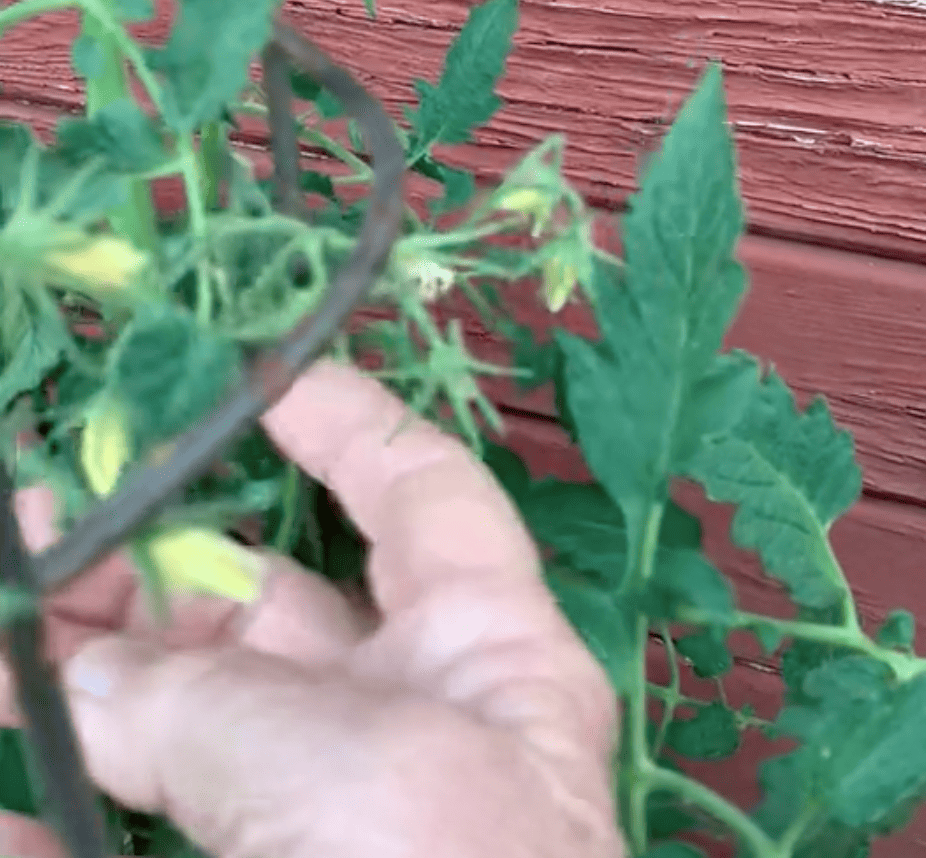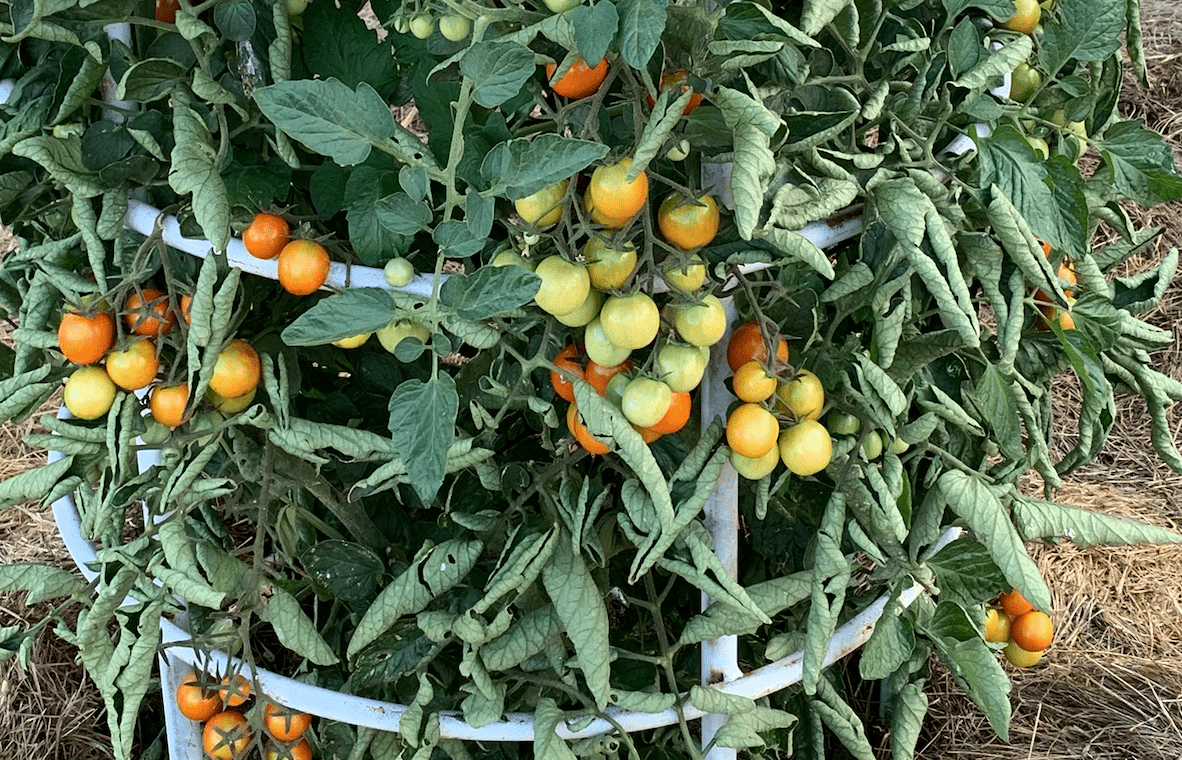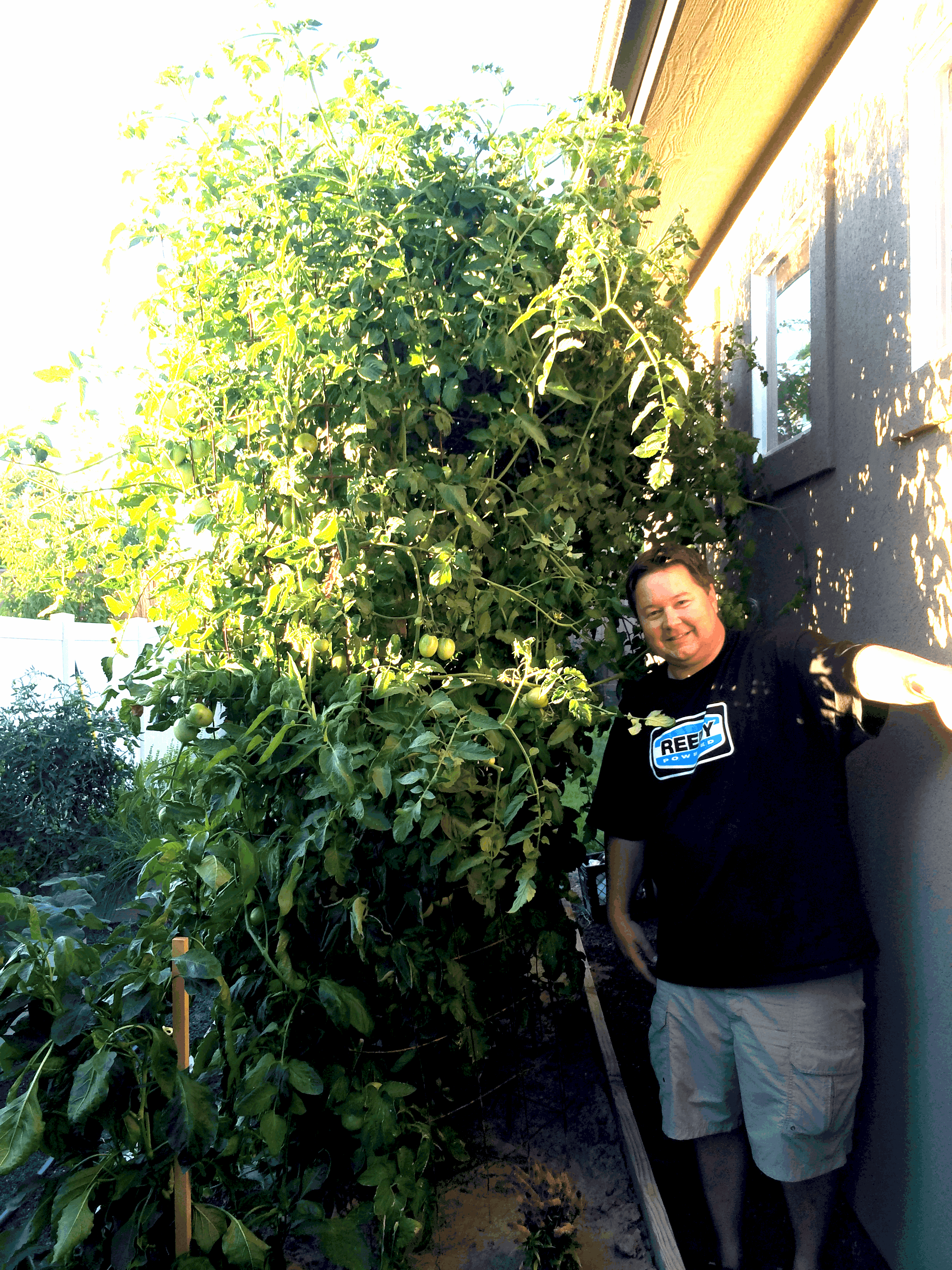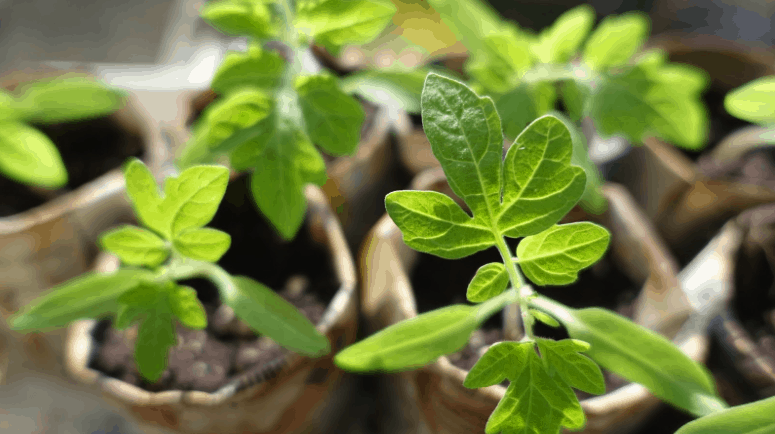[et_pb_section][et_pb_row][et_pb_column type=”4_4″][et_pb_text]
Tomatoes rapidly use nutrients in the soil, so they typically need more fertilizer than other plants. That being said, over-fertilizing can damage or even kill your tomatoes. The best way to know how much fertilizer to use is to have your soil tested prior to the growing season, and then to visually inspect your plants on a regular basis. Once you know what to look for, you can ensure that you supply just the right amount of fertilizer.
Plants need energy from the sun and nutrients from the soil to grow. A soil that is rich in organic material and provides all the macro and micro-nutrients that are needed is ideal, but can be difficult to achieve. Before you even plant your seeds, you can have your soil tested to see what your soil is lacking. Amending the soil in the spring can help prevent some of the problems caused by lack of important nutrients. Using natural products to amend the soil is even better because they will breakdown over time, providing slow and steady nutrients.
Over the course of the season, you will want to keep a close eye on your tomato plants and add fertilizer based on what you observe. The following are some of the most important macro and micro-nutrients and how you can tell if your plants are lacking in them.
- Nitrogen (N) is essential for cell growth and is particularly noticeable in the development of the green parts of the plant like leaves and the stem. If your plants are lacking nitrogen, they may appear spindly, rather than full. The plants may also grow slowly and start to yellow, starting with the oldest leaves first.
- Phosphorus (P) promotes healthy roots and helps fruit to ripen. A phosphorus deficiency will likely manifest itself in poor growth, leaves that have a slightly blue or purplish tint to them and may fall off, and fruit that is subpar because it is late setting or remains small.
- Potassium (K) is important for fruit growth, so when fruit is not setting or isn’t growing well, you may have a potassium shortage. You may also see that the leaves have a brown, scorched look and are rolling inward and downward.
- Calcium deficiencies can result in the dreaded blossom end rot that affects many tomato plants. Try to correct it beforehand by watching for new leaves that start to curl inwards and are lacking in color.
- Magnesium deficiencies are noticeable because the leaves will start to turn yellow or brown between the veins.
Any of these signs could indicate a need for more fertilizer. You can try to correct each problem individually, or you can use a complete natural tomato fertilizer that promotes healthy soil and feeds the plants the specific nutrients they need.
Tomato Secret is the best tomato fertilizer on the market because it combines 12 natural ingredients into a superior blend that will feed the microbes in the soil and create the perfect long-term nutrient source for your plants. With Tomato Secret you can grow huge tomatoes that will be healthier and more delicious than the competition. Find Tomato Secret and other great natural fertilizer products at drjimz.com.
Photo cred: https://pixabay.com/photos/plant-seedling-tomatoes-999375/
[/et_pb_text][/et_pb_column][/et_pb_row][/et_pb_section]



